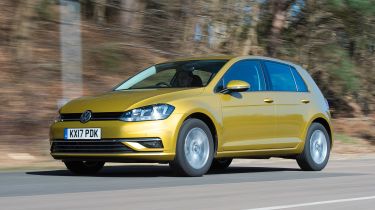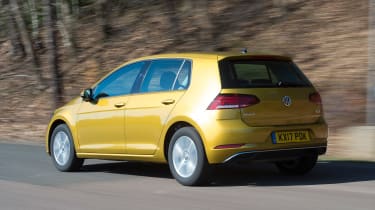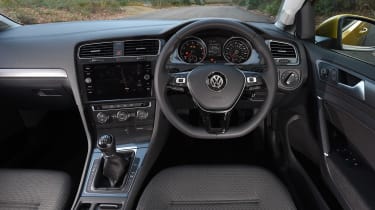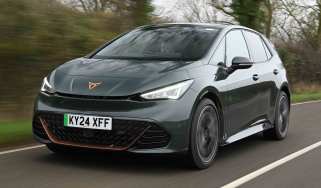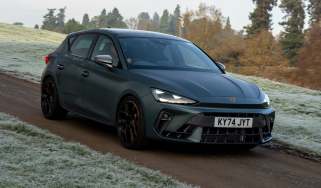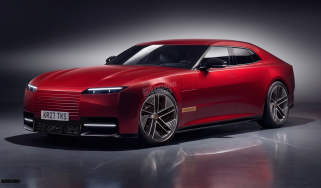Volkswagen Golf (2012 - 2019) review
The Volkswagen Golf continues to be an impressive all-rounder that justifies its price premium over family hatchback rivals

There's no doubt that the Volkswagen Golf has earned its place at the front of the family hatchback pack. Over 43 years and seven generations it's been a mainstay in the sector, and the latest model is more complete than it's ever been.
It's been on sale in Mk7 form for a few years now, but a facelift in 2017 helped freshen it up. VW was clever with the update, as it targeted areas where the Golf needed subtle improvements. As a result, class-leading quality is now backed by cutting-edge tech.
The Golf's strong points include its air of solidity, classy and understated looks, peerless refinement and a wide variety of bodystyles and engines with varying levels of performance and economy. It's slightly more expensive than its closest rivals, but it does hold on to its value like no other mainstream family hatchback, so VW is often able to offer it with competitive monthly finance payments.
As the Golf uses VW’s MQB platform, it offers safe yet engaging handling and excellent ride comfort, while a variety of driving aids mean the Golf can be extremely safe yet reasonably enjoyable to drive.
Ask somebody to think of hatchbacks for sale today, and the Volkswagen Golf will likely be the first car that springs to mind. It's a staple of the market that has been around since the mid-1970s, but today's car is a far cry from the original.
Used - available now
There's a broad line-up of models for starters, with three-door, five-door and estate versions offered, petrol, diesel and electric power and trims ranging from the basic S and SE variants all the way to the rapid GTI and Golf R hot hatchbacks. There is pretty much a Golf out there to suit nearly all needs and wallets.
• Volkswagen Golf 1.0 S review
The current VW Golf is the Mk7, which was introduced in 2012. Actually, it's now known as the Golf Mk7.5, as it received an update in 2017 to help it stay competitive in the hatchback sector. Under the skin, the Golf platform has subsequently been used for a slightly larger variant (Golf SV), an MPV (Touran) and a crossover (T-Roc), which all expand on the Golf's basic abilities.
The 2017 update saw new technology added to the Golf, but not much else was changed, including the looks. Some people will find the Golf a little bland, but then the classy, unassuming looks mean the Golf can fit in just about anywhere, from an industrial estate to a country hotel car park.
As already mentioned, the model range is comprehensive, and kicks off with the basic Golf S. This is priced from around £18,500, but only comes with the smallest engines in the range. Move up to SE, and there are more engine options available, while GT and R-Line models ditch the lower power outputs.
If you want to go electric, the e-Golf is available, which replaces internal combustion with a zero-emissions electric motor and battery. At the top of the range, the performance Golf line-up comprises the diesel GTD, the plug-in hybrid GTE, the popular Golf GTI and the four-wheel drive Golf R.
All cars feature VW's latest MQB platform, and the majority of cars are front-wheel drive. 4MOTION four-wheel drive is standard on the Golf R, as well as some versions of the Golf Estate, including the off-road biased Golf Alltrack. The main benefit of MQB is that it saves weight over the Mk6 Golf, so the Mk7 handles really well. This is especially true of cars with 1.5 and 2.0-litre engines, as these replace the standard torsion beam rear suspension with a multilink set-up. You'll also find this set-up on the all-electric e-Golf.
There are plenty of engines to choose from in the Golf. Petrol power comes from a 1.0 TSI turbo three-cylinder in 85PS and 115PS guises, while the four-cylinder turbo 1.5 TSI Evo with cylinder deactivation comes in 130PS and 150PS forms. At the top of the range, the 2.0 TSI is the performance motor of the range, and only comes in the Golf GTI or Golf R, where it has 245PS and 300PS respectively.
Diesel power comes from a 1.6 TDI with 115PS and a 2.0 TDI in 150PS and 184PS guises, the latter only being offered in the Golf GTD hot hatch. While diesel is a bit of a scare word at VW after the Dieselgate emissions scandal, it's worth noting that none of the current Golf's engines are in any way affected, and all meet current emissions legislation requirements.
There are alternatives to petrol and diesel power, though. For an eco-minded performance car, the Golf GTE uses a 1.4 TSI petrol and electric motor with plug-in battery pack to make 204PS, yet has emissions as low as 38g/km. There's also the fully-electric VW e-Golf. It uses an electric motor and battery pack to deliver a range of up to 186 miles of zero-emissions driving in a package that's all but identical to the standard Golf.
Gearbox choice depends on the engine you choose. The 1.6 TDI and least powerful 1.0 TSI use a five-speed manual, while the majority of the range gets a six-speed manual as standard. VW's seven-speed DSG auto offered across the range, although not if you buy a three-door Golf (unless it's a GTI), while the GTE, GTD and Golf R all get the DSG box as standard. The e-Golf gets a single-speed auto.
Alternatives to the Golf are numerous, especially since the VW's price range puts it in competition with conventional compact hatchbacks and premium models. Of the mainstream rivals, the Ford Focus, Vauxhall Astra, Honda Civic and Peugeot 308 are all worth considering. Elsewhere, the Audi A3, SEAT Leon and Skoda Octavia use the same platform but respectively offer premium quality, sportier handling and added practicality when compared to the Golf - the latter two are better value, too. Elsewhere, the Renault Megane, Hyundai i30 and Kia Ceed are all much improved, while other premium rivals include the BMW 1 Series, Mercedes A-Class, Volvo V40 and Lexus CT.
For an alternative review of the latest Volkswagen Golf Hatchback visit our sister site carbuyer.co.uk

